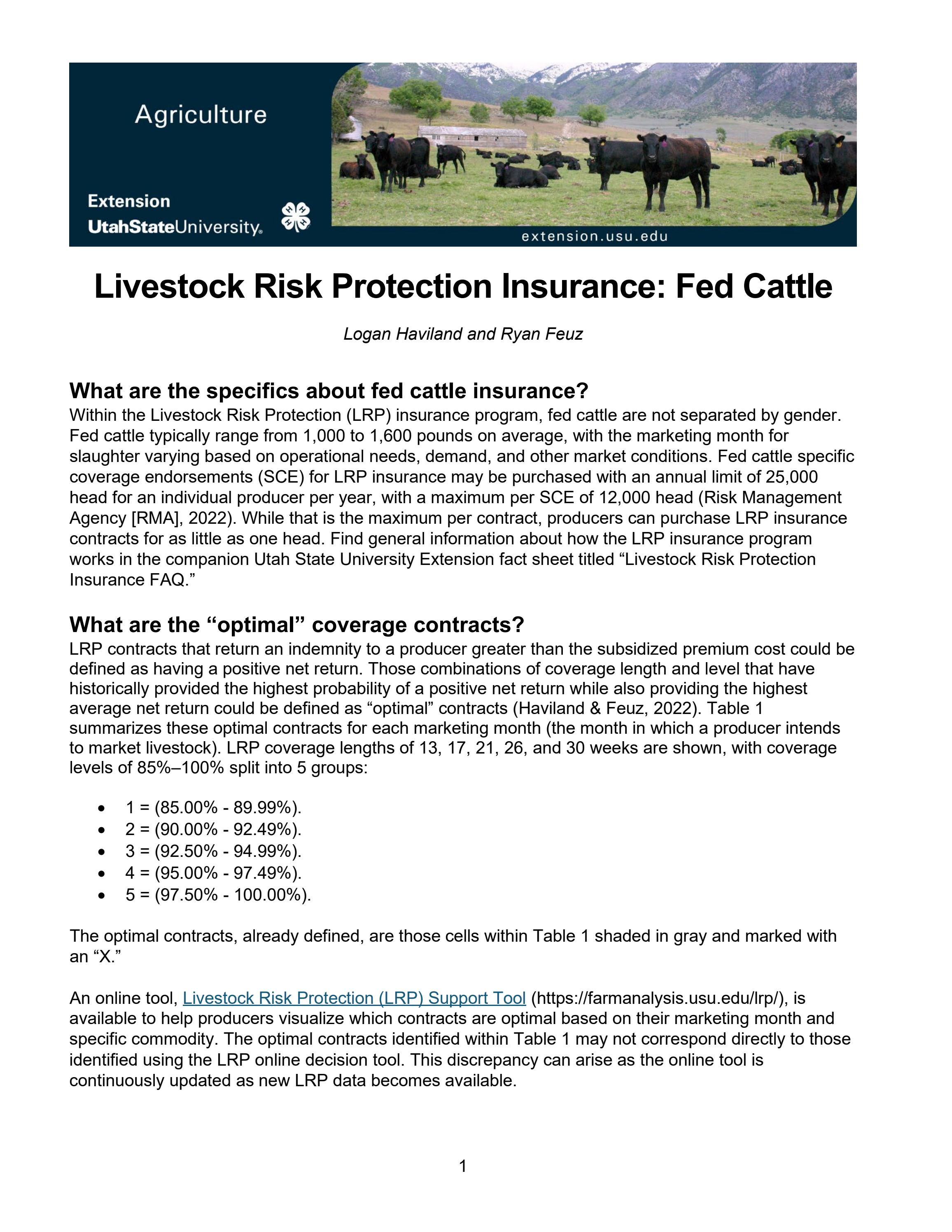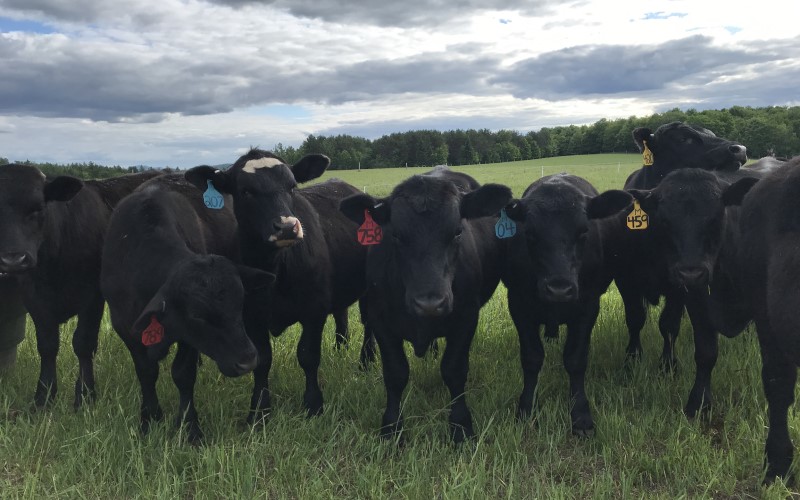Strategic Collaborations for Strength: Bagley Risk Management
Strategic Collaborations for Strength: Bagley Risk Management
Blog Article
Recognizing Animals Risk Defense (LRP) Insurance Coverage: A Comprehensive Guide
Navigating the world of animals danger defense (LRP) insurance can be a complicated endeavor for many in the agricultural sector. From how LRP insurance coverage works to the various protection choices readily available, there is much to reveal in this detailed overview that might potentially form the means livestock manufacturers approach threat management in their companies.

How LRP Insurance Policy Works
Periodically, comprehending the technicians of Animals Danger Security (LRP) insurance policy can be complex, but breaking down exactly how it functions can give quality for ranchers and farmers. LRP insurance policy is a risk monitoring tool made to protect livestock producers versus unforeseen cost declines. It's vital to note that LRP insurance is not an earnings assurance; rather, it focuses solely on price threat defense.
Qualification and Coverage Options

When it comes to protection options, LRP insurance policy offers producers the adaptability to select the insurance coverage degree, protection period, and endorsements that ideal match their threat administration needs. By recognizing the eligibility criteria and insurance coverage choices readily available, livestock manufacturers can make enlightened choices to manage threat successfully.
Benefits And Drawbacks of LRP Insurance Coverage
When assessing Livestock Threat Defense (LRP) insurance, it is essential for animals producers to weigh the negative aspects and advantages inherent in this danger monitoring tool.

Among the main benefits of LRP insurance policy is its capability to give protection against a decrease in livestock rates. This can aid protect manufacturers from financial losses arising from market changes. In addition, LRP insurance provides a level of versatility, allowing producers to customize insurance coverage degrees and plan periods to fit their specific needs. By locking in an assured cost for their animals, producers can better take care of danger and prepare for the future.
Nevertheless, there are likewise some disadvantages to think about. One limitation of LRP insurance coverage is that it does not protect against all sorts of risks, such as illness outbreaks or natural disasters. Additionally, costs can occasionally be expensive, especially for manufacturers with huge animals herds. It is crucial for manufacturers to very carefully examine their individual threat direct exposure and financial scenario to identify if LRP insurance coverage is the ideal threat monitoring device for their operation.
Recognizing LRP Insurance Premiums

Tips for Making Best Use Of LRP Conveniences
Optimizing the advantages of Livestock Risk Defense (LRP) insurance policy requires critical planning and aggressive danger administration - Bagley Risk Management. To make the most of your LRP protection, consider the following ideas:
Routinely Analyze Market Conditions: Remain informed regarding market patterns and cost changes in the animals industry. By keeping an eye on these variables, you can make educated decisions concerning when to acquire LRP coverage to shield versus prospective losses.
Set Realistic Coverage Degrees: When selecting insurance coverage levels, consider your production expenses, here are the findings market worth of animals, and possible risks - Bagley Risk Management. Establishing sensible protection levels makes certain that you are properly secured without overpaying for unnecessary insurance policy
Expand Your Coverage: As opposed to counting only on LRP insurance policy, think about expanding your risk administration techniques. Integrating LRP with various other danger management devices such as futures contracts or options can offer thorough coverage versus market unpredictabilities.
Review and Readjust Coverage Consistently: As market problems transform, occasionally examine your LRP insurance coverage to guarantee it straightens with your existing danger direct exposure. Readjusting protection levels and timing of acquisitions can help enhance your danger defense method. By following these suggestions, you can optimize the benefits of LRP insurance coverage and secure your animals procedure versus unpredicted dangers.
Final Thought
To conclude, animals danger protection (LRP) insurance coverage is an important device for farmers to handle the monetary risks connected with their animals operations. By comprehending how LRP works, eligibility and insurance coverage choices, along with have a peek at this website the advantages and disadvantages of this insurance coverage, farmers can make enlightened decisions to shield their incomes. By carefully taking into consideration LRP premiums and applying approaches to maximize advantages, farmers can alleviate possible losses and make sure the sustainability of their procedures.
Livestock producers interested in acquiring Livestock Threat Security (LRP) insurance policy can discover an array of qualification criteria and insurance coverage choices tailored to their details livestock operations.When it comes to protection alternatives, LRP insurance offers producers the flexibility to choose the insurance coverage level, insurance coverage duration, and recommendations that ideal suit their threat management demands.To grasp the complexities of Animals Risk Security (LRP) insurance completely, recognizing the factors influencing LRP insurance coverage costs is vital. LRP insurance coverage costs are determined by various components, consisting of the protection degree chosen, the expected price of livestock at the end of the coverage duration, the kind of livestock being guaranteed, and the size of the insurance coverage period.Testimonial and Readjust Protection Regularly: As market conditions transform, regularly review your LRP protection to ensure it straightens with your present risk direct exposure.
Report this page